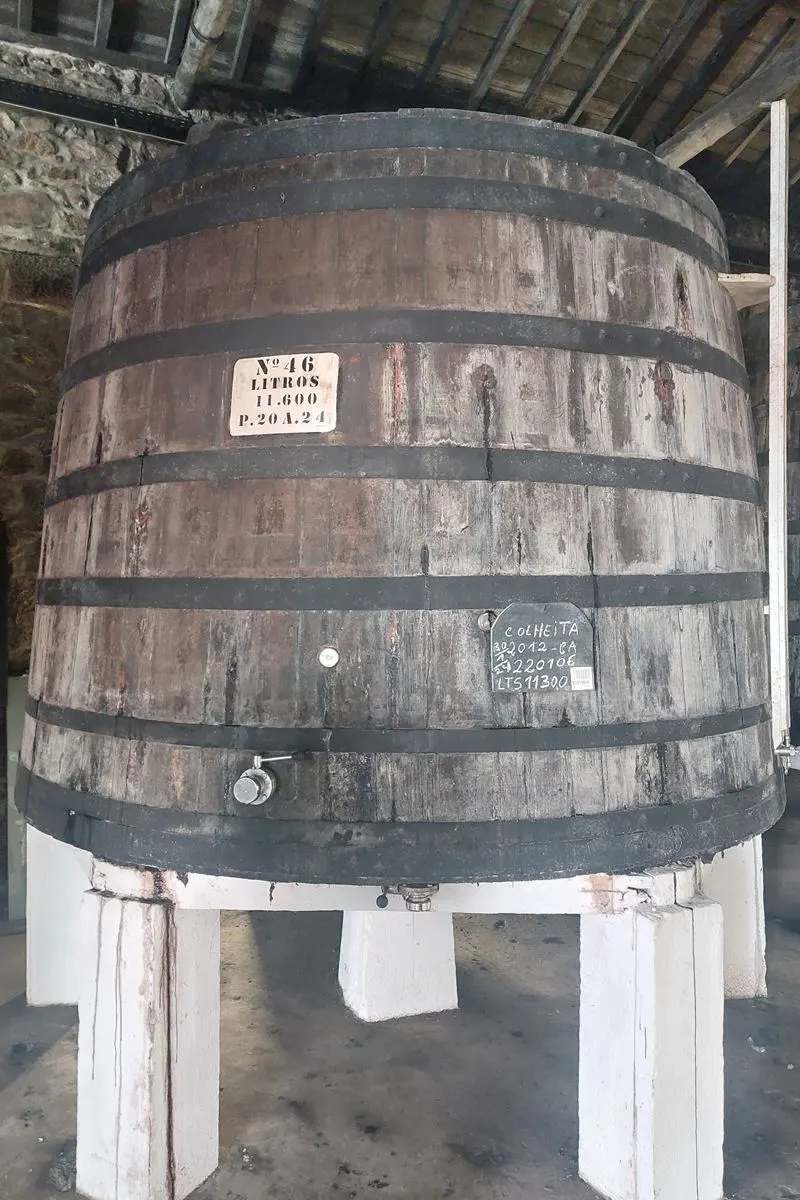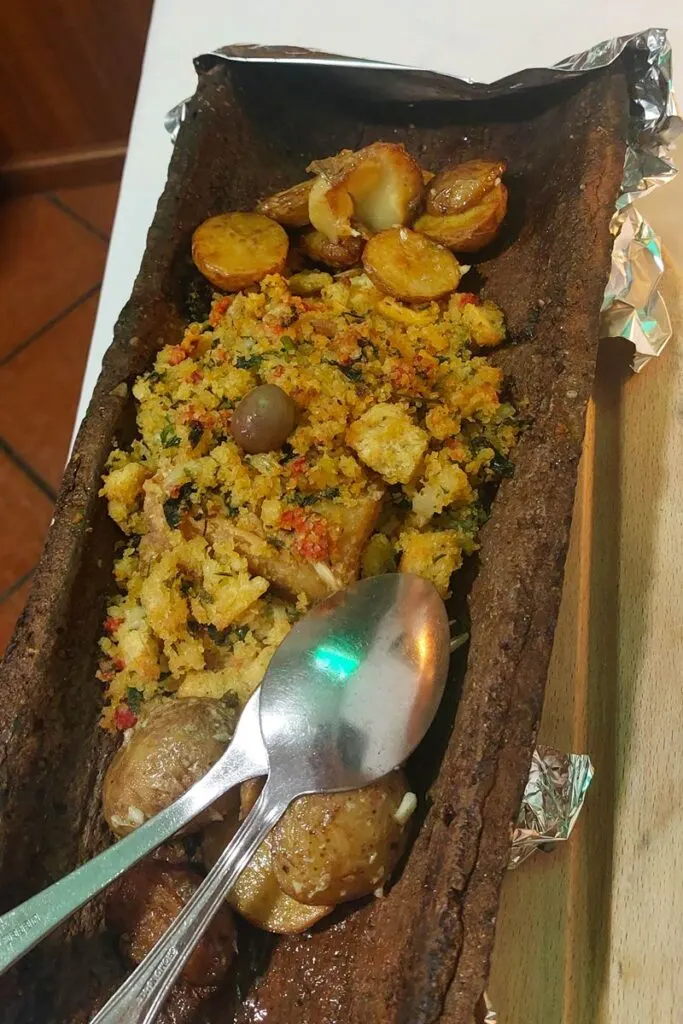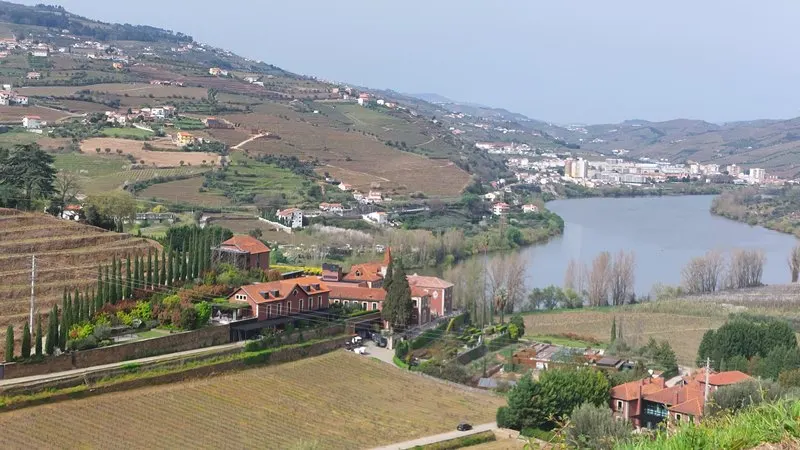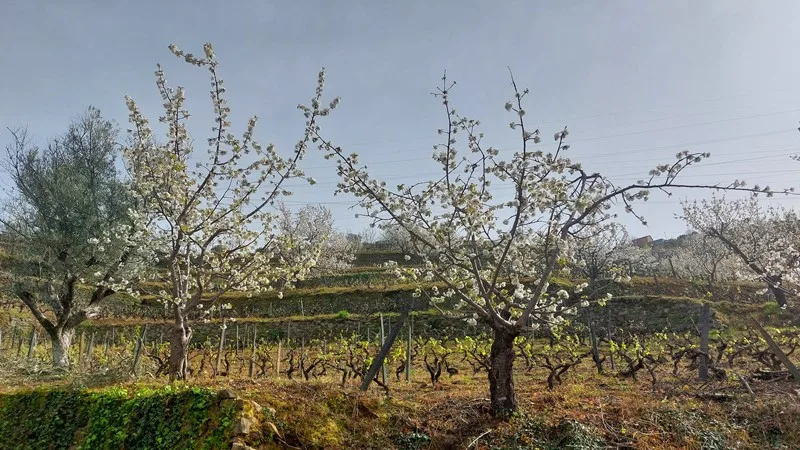Driving the Douro Valley from Porto
We are presently residing in the beautiful city of Porto, in Portugal, where the Douro River meets the sea at Vila Nova de Gaia. So we recently decided to do a short Douro Valley Road Trip down the Douro Valley to see what all the hype was about. Our Douro Valley self-drive tour was cheap and easy and this post will give you a bit of insight into what we discovered along the way.

The Douro Valley is an incredibly beautiful hilly valley that follows the Douro river from Porto/Gaia inland into the Province of Soria in Spain. The river is surrounded by hills and mountains on both sides that are mainly used to produce grapes for the winemaking business along the river.

At the Wine Experience museum in the WOW (World of Wine) in Gaia it is possible to see a huge map of the Douro showing all the vineyards (Quintas) along the river.

The Alto Douro Wine Region is recognised as a UNESCO World Heritage Site, as is the centre of Porto. Both deservedly so.
The hills are covered in terraced vineyards that produce the grapes used to produce both the wonderful Portuguese wines from the region and the most commonly known product, Port wine. Whilst in Porto, you can see all the large signs above the Port houses, based in Gaia, where the port is aged. As you drive along the river you come across some of the same well-known brand names as you pass the relevant Vineyard.

We had heard that the road along the river was an amazing drive, and we were not disappointed. Next time I intend to do it on a motorcycle as part of the road, especially the N222, is perfect for motorcycling.


We travelled with our 14-year-old daughter by hire car, rented from Europcar at Campanha train station, and drove as far as Pinhão, a pretty little town located on a bend in the river. We rented our car via Booking.com which gave us an attractive discount.
We stayed one night in a gorgeous little town in the hills called Barcos, where we rented a small B&B, Refugio D’Anita for the night. They were dog-friendly and accepted our little dog that accompanied us. If we had had more time to plan, it would perhaps have been better to find a vineyard to stay at to do some wine tasting, but we decided to keep that for another time.

Having the car allowed us to explore along the way and stop when we wanted to.
But another way to travel, perhaps a bit more relaxed, is along the Douro Railway (Linha do Douro). There is a train that leaves from Porto (Campanha or São Bento) all the way to Pocinho, a trip of about 109 miles which takes about 3, 5 hrs. Tickets are not that expensive and much of the trip is along the river side.
A Scenic Drive on the Douro River Valley
The drive along the river is quite extraordinary. In some areas, the road follows along the river.

But often you climb into the mountains, where you have a wonderful view of the opposite bank from on high. Part of the route we followed was along the Rota do Românico, or Route of the Romanesque.

Part of this route follows through the Douro Valley and brings you to some wonderful chapels, churches, castles, bridges and museums that fill this area. This route brings you to historical monuments of Romanesque architecture, dating back to the late 10th and 11th centuries. You can find maps of this route here: Rota do Românico maps.

Many of the Quinta’s along the way are situated at the top of hills which must have the most spectacular views of the surrounding countryside.

There are also river cruises available at some locations along the way such as Pinhao.
Winemaking in the Douro Valley
There is evidence of wine production in this region since Roman times. But it was the Port that made this area famous since the 17th century, due to the treaties with the British, who had developed a taste for it (just remember to pass it to the left!).
Although the non-fortified wine in this region is excellent it was still not as important as the Port which had become an important export product for the region. To some extent, this is still partly the case.
These days the diversity of the wines in the region is astounding. Earlier in the year we went to a wine tasting event at the Palácio da Bolsa in February, which was parading hundreds of different wines from throughout Portugal.

It was absolutely amazing – the quality, diversity and amount of the wines on show, many from vineyards that only sell their wines online to individual customers. Many of the winemaking farms are family-owned and remain as such to protect the heritage. The people working at the winetasting were all very knowledgeable and proud to demonstrate their own individual products. It has become an annual event for us to attend.
Some of the wines we tasted from all over Portugal, and we tasted a few, were these below (not all were Douro Valley Wines);
Quinta do Pessequeiro (Douto Valley)
Burmester (Douro Valley)
Quinta do Acisprestes (Douro Valley)
Vasques de Cavalho (Douro Valley)
Quinta de Santa Christina (Tâmega river)
Quinta do Casal Branco (Tagus Valley)
Bridao (Tejo River)
Casal Garcia (Vinho Verde)
Villa Alvor (Algarve)
But Port is still the most famous product from the area. We had a Port winetasting in Gaia another time where we visited several Port producing companies and tried their best wines. The amazing guide told us all about the Port production process , and showed us around the ageing stores. You could see them ageing their wines in barrels and large casks.

This is also well worth doing if you have the time and inclination. Not something for kids though obviously. You can see the different wines maturing in their casks and barrels and hear how the production process varies between the Tawny, Ruby and White styles.

They now even have a Rose Port, only recently introduced in 2008, which is quite wonderful. It is now already one of their big sellers as it appeals to a different clientele, the younger cocktail drinkers and females.

Book your Porto wine tour, or Douro Valley River trip here…
Locks Along the River
Along the Douro River a total of 15 dams have been built to regulate the water flow, and generate power. Navigation is possible through the locks in the dams.
Five of these are in Spain, while five are around the Spanish/Portuguese border. The remaining 5 dams are in Portugal. We passed a few of these along the way.

The locks allow for the transportation of the wine barrels downstream to Porto.
Here you can find the map of the route we took along the river which shows the location of the different locks. Some of the other points of interest in this article are also shown on the map.
Prior to building the dams and locks in 1968 the wine would have been transported in the traditional rabelo boat that you can still see moored in Porto on the Ribeira and Gaia. These boats are unique to the Douro and with their shallow draught designed to navigate the fast-flowing river, before the flow was controlled.
At the festival of São João, held in Porto on the 23rd of June every year (which if you get the chance you should not miss) there is a regatta of these boats from Foz to Pont D. Luis.

Douro Valley Day Trip or Stay Overnight
We had a lovely couple of days. The weather was fine and the roads were clear.
You could easily do a Douro day trip. But we would recommend taking an extra day so you can stay at one of the vineyards along the way and have a winetasting session in the evening. Book beforehand though.
You could also take the opportunity to stop off somewhere suitable for a Valley River cruise.
On the one evening we had we ate at Tabua D’aço run by chef Thomas Egger. The restaurant has a wonderful view of the river and serves traditional Portuguese fare.

The small town we stayed at in Bracos was charming and it felt very much like we were back in the 11th century. The Church had speakers that projected the sound of bells every half hour!! Yes really! The funny thing was that we got used to it within the day.
If you are in Porto and have time, a visit to the Douro Valley is really a must do activity. You can organise a wine-tasting trip from the city, take the Douro train or do as we did and do the Douro Valley by car to explore yourselves.
And do not forget to try the wine along the way (but not if you are driving of course!!)
What to do in Douro Valley
As we did not visit any vineyards along the way on this trip we cannot directly recommend any for winetasting, but there are river trips and other activities that you can organise here:
You will find along the way that the valley is also covered in citrus orchards and cherry trees. We were lucky enough to be there in March when the cherry blossom was out on the hills. Stunning.


For the kids you can organise a boat trip, go kayaking or take them swimming in one of the municipal swimming pools.
Or take them to a vineyard to learn about how they make the wine.
Some, although a bit of a detour from the Douro, like the Monverde Family Tasting Experience have activities for kids. They can crush the grapes themselves with their feet and taste the grape juices! They can even make a blend of their own choice, bottle, label and cork the bottles. Now that has to be fun!
If money is no option, you could stay at one of the luxury spa hotels along the Douro like the Six Senses, with a spa and pool, fine dining and a wine library of 750 vintages from the region. It will cost you an arm and a leg but it will be an experience you will never forget.


We found that some of the random restaurants along the way were also quite expensive and obviously catering for tourists. So if you are on a budget probably the best thing to do is plan to eat somewhere utilised by the locals, as we did. Often the best way to avoid surprises.

You can book your river trips here:


Douro Valley Road Trip – Conclusion
The Douro Valley is a wonderful place to visit, with or without kids. We recommend a Douro Valley road trip by car, which gives you the option to go where you choose. Alternatively, take the train and enjoy the scenery along the river.
Taking the car allows you to stop at charming places like this for an ice cream along the way! Check ou the map for the location of this charming little cafe along the Rio Bestança.

The views are quite spectacular and there are plenty of things to see and do. Plan your trip in time and decide what you want to see before you go so that you do not miss the best bits for you.
Have a great Douro Valley Road Trip!
